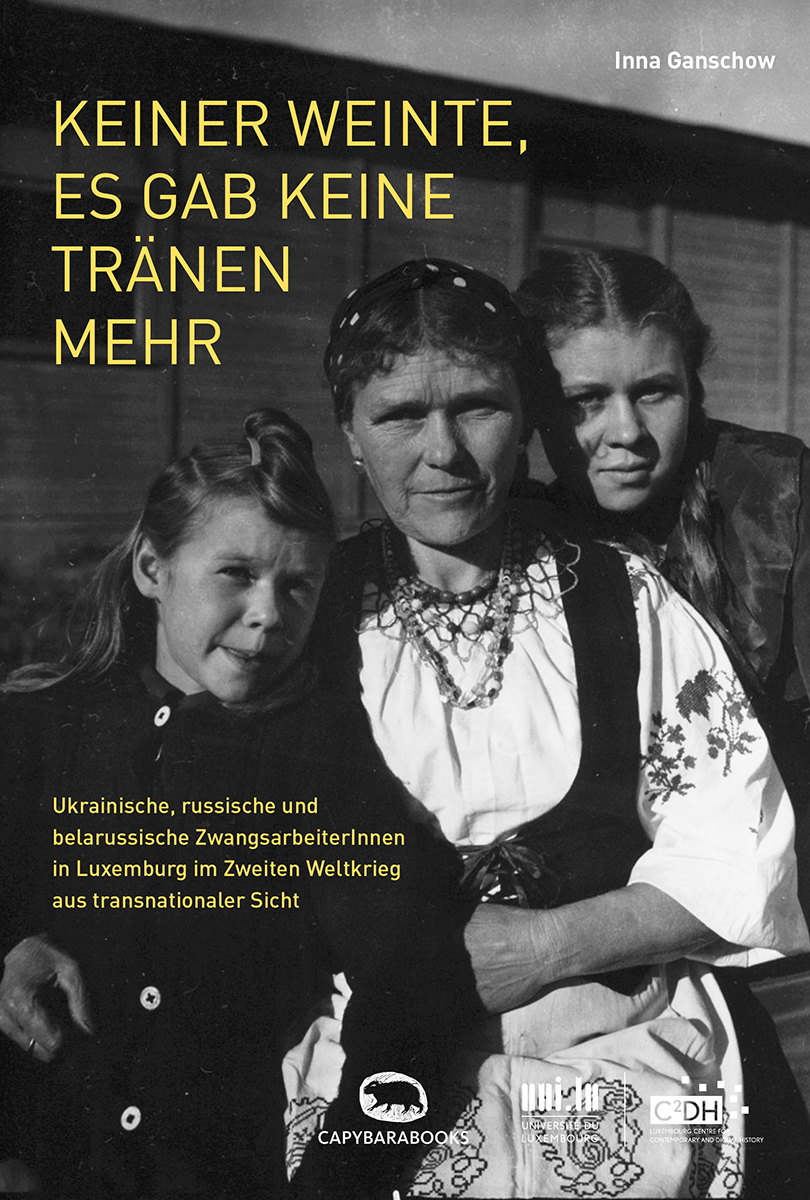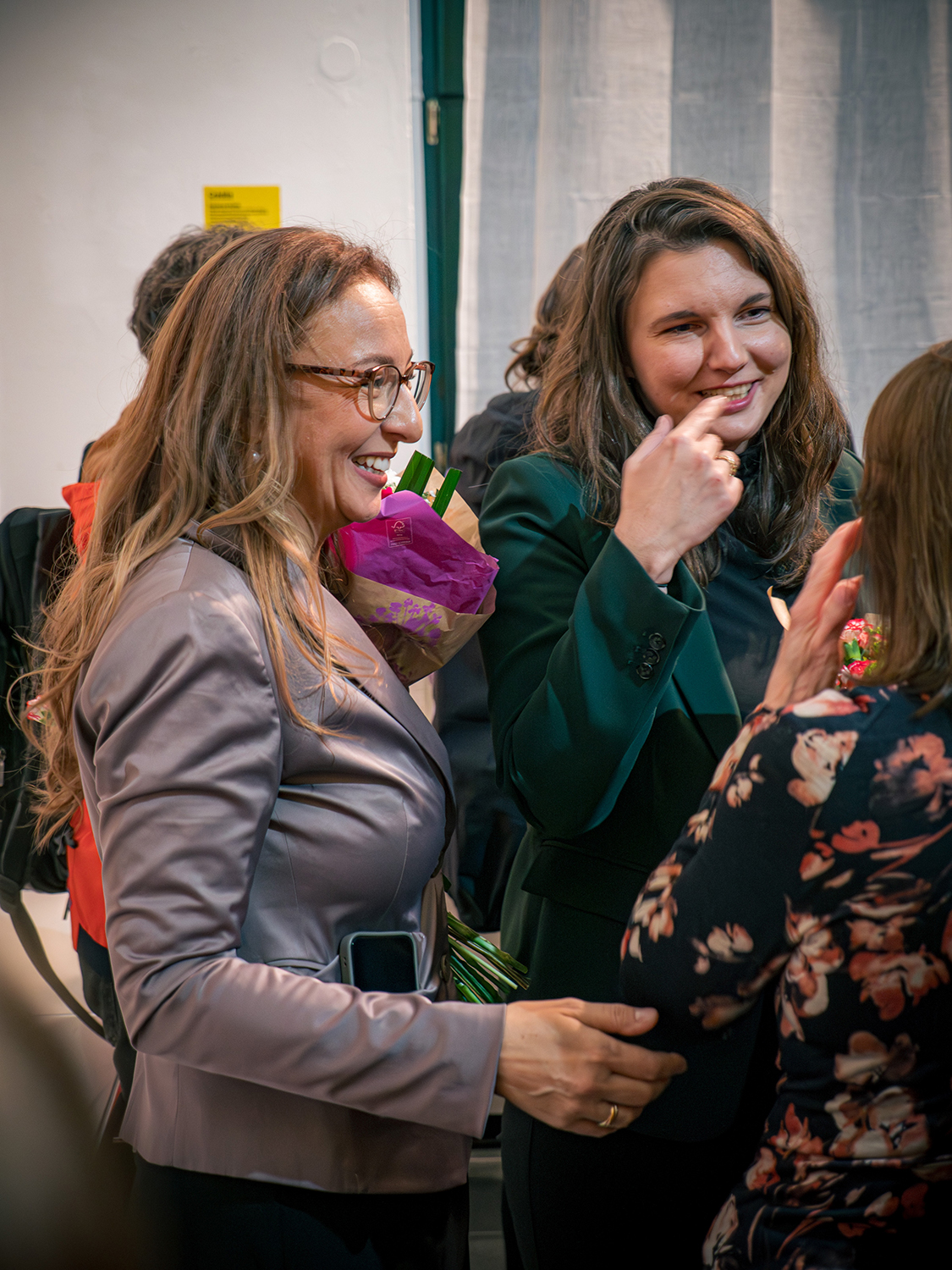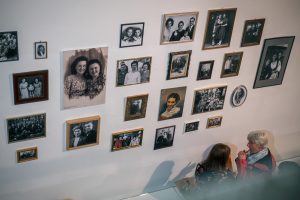Luxembourg labour force from Soviet territories
Between 1942 and 1944, around 4,000 forced labourers from Soviet territories were deported to Luxembourg, which at the time was under German occupation. This labour force, mostly women, adolescents and sometimes children, was made to participate in the German war effort by working in the Luxembourg steel industry and agricultural sector.
‟ It was still dark when we arrived in Differdange. Former Russian and Belarusian students who were older than us had arrived earlier, and eight grandmothers with their grandchildren, who had been grazing cattle by the tracks, had been taken by the Germans to Germany with their cattle. They were crying ‘Dear girls, why did you come here? This is forced labour.”
Around half of these people were from Ukraine, a third were from Russia and a fifth were from Belarus. Since most of them were forced to return home after the conflict, all memories of their labour and presence disappeared without trace.
The ZWANG research project
The aim of the ZWANG research project, led by Inna Ganschow, a researcher at the Luxembourg Centre for Contemporary and Digital History (C²DH), was to understand the experiences of these individuals, both by tracing their individual stories and also through a more systematic investigation of this unexplored chapter in Luxembourg’s history. Ganschow pieced together their daily lives in barracks and their working conditions in cement kilns, steel plants and mines, as well as on farms and in private homes, where they were forced to work.
‟ The work was hard: unloading sand, gravel, bricks and cement from the cars, and at the factory we unloaded coke and coal. […] The boys had to carry heavy 50kg bags of cement, and if they dropped them they were beaten. We cried in secret.”
Inna Ganschow has been able to identify 2,621 people thanks to the project, which is part of a strategy of collective remembrance aimed at recognising the suffering of these forced labourers and honouring their memory as another overseen group of victims of the Nazi regime in Luxembourg. It also highlights the importance of preserving this history and passing it on to future generations.

The research results have been published in Inna Ganshow’s book Keiner weinte, es gab keine Tränen mehr (Luxembourg: Capybara, 2025), which won the Lëtzebuerger Buchpräis in November 2025. The research served as the basis for the exhibition OST – The vanished traces , hosted at the Documentation Centre for Human Migration (CDMH) in Dudelange. The exhibition was curated by Joëlla van Donkersgoed from the C²DH, in collaboration with Antoinette Reuter from the CDMH.
The exhibition OST – The vanished traces
The exhibition features fourteen themed panels that tell the stories of these individuals through testimonies and personal accounts, archive documents and objects. Maps indicate the locations of the camps across Luxembourg, including in Belval, today home to the University of Luxembourg. Visitors are presented with five personal stories of Ostarbeiter from Ukraine, Russia and Belarus during the German occupation, starting with their life before the war and tracing their time in Luxembourg and their return home.
‟ When we arrived [home], there was also mistrust; you couldn’t study or get a respectable job because you had been in Germany – in other words, you were a criminal. […] But was that our fault? Was it my fault that I was taken there when I was thirteen?”
The exhibition introduces visitors to five Ostarbeiter, inviting them to engage with these figures not only through texts and images but also with interviews, subtitled in English and French, which are presented here for the first time. The exhibition texts have been reproduced in a small booklet, in French and English, which visitors are welcome to take home. Van Donkersgoed has curated the exhibition to guide visitors from the darker history of Nazi occupation in Dudelange and child labour towards more empowering stories of exchange, creativity and resilience.

Inna Ganschow (left) and Joëlla van Donkersgoed (right) at the opening of the OST exhibition

Visiting the OST exhibition in Dudelange
As the stories grow lighter, so does the space itself, culminating in a final room that features family portraits and a new monument dedicated to “Camp Rellent”, a former labour camp in Dudelange. Designed by Anton Stepine, the monument will be installed at the Camp Rellent site after the exhibition closes. It will be the first monument at a former camp for deported workers in Luxembourg to commemorate the history of forced labour during the Second World War.
The exhibition is open to the public (free of charge) from Thursdays to Sundays (15:00-18:00) until 29 March 2026.
